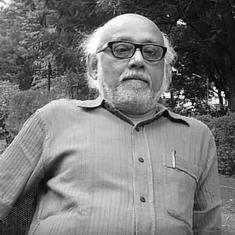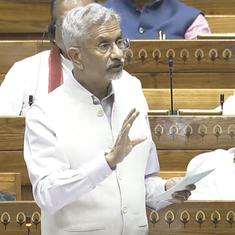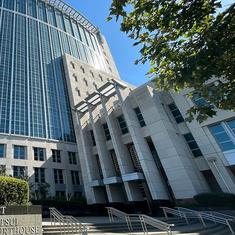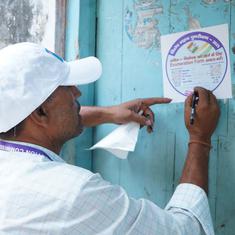In 2005, Rajive Raturi, a human rights activist with a visual disability, took the Indian government to court demanding access to public places and transport facilities for millions of persons with disabilities like himself.
India passed legislation in 2016 laying down accessibility standards that were expanded to various sectors.
Yet, implementation was lacking on the ground.
Then, in a ruling on Raturi’s case on November 8, the Supreme Court struck down the legislation’s rule, which covered these accessibility standards, noting that they were not mandatory guidelines. In a strongly worded judgement, the court ordered the Centre to frame mandatory rules for accessibility.
The court’s ruling while being promising has also left accessibility in a flux. There is cause for genuine concern, especially given the long delay in Raturi’s case – a lot of it due to the Centre – and policymaking: India has not had a full time, independent Chief Commissioner for Persons with Disabilities for years.
A progressive convention and law
In 2005, when Raturi went to court, the law in force was the Persons with Disabilities Act, 1995 – a toothless, recommendatory legislation that did not enforce accessibility for persons with disabilities in any way.
But in the next few years, a lot would change in the world of disability globally. In 2006, the United Nations drafted the Convention for the Rights of Persons with Disabilities and India became one of its first signatories in 2007.
The convention looked at disability through a social model, ie, that it results from the larger social context of a person’s life that hinders their equal participation in society. Its preamble defined disability as an evolving concept, noting that “disability results from the interaction between persons with impairments and attitudinal and environmental barriers” that holds them back from participating in society on an equal basis with others.
The convention was based on the principles of equality, non-discrimination and accessibility. Many, like Raturi, were hopeful that since India had ratified the convention, a new disability legislation incorporating its principles would surely be on its way.
In 2009, the Ministry of Social Justice and Empowerment set up a committee to draft a bill meeting the requirements of the treaty. This eventually led to The Rights of Persons with Disabilities Bill of 2011, which went through multiple iterations, debates and committees.
However, India’s disabled community would have to wait nine long years before, in a rare moment of bipartisanship, Rajya Sabha passed the bill in December 2016, followed by the Lok Sabha on December 16, the last day of the session. After the president’s assent on December 28, the Rights of Persons with Disabilities Act, 2016, came into force on April 19, 2017.
The Act was nowhere near perfect but it was a leap forward when it came to accessibility.
Section 40 states that the Centre, in consultation with the Chief Commissioner of Persons with Disabilities, is to lay down standards on accessibility. The standards are to cover the physical environment, transportation and information and communications while using “appropriate technologies and systems and other facilities and services provided to the public in urban and rural areas”.
Section 44 lays down non-negotiable norms to make new infrastructure accessible stating that permissions will not be granted if the building plan does not adhere to the rules formulated under Section 40. It also states that completion certificates shall not be granted and establishments will not be allowed to take occupation of a building if accessibility rules are not complied with.
Section 45 prescribed a five-year limit to make all public buildings accessible as per the rules. Section 46 gave service providers two years to ensure compliance with the rules.
Accessibility guidelines were addressed in Rule 15 of the act, framed by the Department of Disability Affairs under the Ministry of Social Justice and Empowerment.
India’s disabled community was hopeful that they could finally move forward. With stronger legislation to support accessibility, a Supreme Court ruling in Raturi’s case in December 2017 identified 11 action points pursuant to the Act and the Accessible India Campaign for compliance – for instance, completing accessibility audits and meeting deadlines.
The Centre and the states were given three months to file affidavits. But despite repeated hearings, nothing of note was submitted.
Six years later, in 2023, the Supreme Court appointed the Centre for Disability Studies at NALSAR University to prepare a report on the steps that central and state governments should take to make accessibility a reality for persons with disabilities.
The comprehensive report highlighted accessibility concerns and pointed out that the Centre had violated Sections 40 and 44 to 46 of the act since it came into force. These sections pertained to framing non-negotiable accessibility standards and ensuring time-based compliance.
Rule 15 of the legislation’s rules specify accessibility standards. Rules explain how the law will be implemented and followed.
Over the years, the central government has included various accessibility standards in the rules. At present, there are 17 documents which comprise accessibility rules, such as the Harmonised Guidelines for Universal Accessibility, accessibility standards for information communication technology products and services, culture-specific guidelines, guidelines for sports complexes, civil aviation, healthcare, rural development, police, railways, ports, education and banking.
Supreme Court ruling
In its ruling on November 8, the Supreme Court strongly criticised the Centre for masking recommendatory guidelines under the garb of mandatory rules. It quoted various guidelines that, instead of laying down non-negotiable rules, have used language such as “sensitize”, “recommend”, “guide”, “may” and the like. For instance, the Civil Aviation guidelines state that accessibility is to be achieved “over time”.
The court also came out strongly against contradictions in the sector-specific accessibility rules: for instance, measurements for accessible toilets are different in the Harmonised Guidelines from 2021 and the rules for civil aviation.
The Supreme Court has struck down Rule 15(1), which is the source of all these guidelines. It has given the government three months, from the date of the judgement, to frame new, non-negotiable rules.
Why there are concerns
I hope this leads to mandated accessibility rules being implemented that can fulfil the dreams of millions of disabled Indians for an accessible country.
But what this also means is that the existing rules are not enforceable. With Rule 15(1) struck down, India, as it stands today, has no legally enforceable accessibility standard. We are back in the wild, wild west when it comes to accessibility.
I hope the government does not delay drafting the minimum accessibility floor for mandatory compliance but there is reason to be concerned.
The first is the delays in the submission of affidavits by the Centre in this very case. Second, Section 40 mentions that these rules will be formed in consultation with the Chief Commissioner for Persons with Disabilities. But India has not had a full-time chief commissioner for years – the Secretary of the Department of Disability Affairs has been wearing that hat.
The current secretary has pronounced some progressive judgements but there must be a Chinese wall between the Department of Disability Affairs and the chief commissioner’s office, which is a quasi-judicial position, for the chief commissioner to be genuinely effective.
Third, which is the most significant sign of the absence of intent, has been the fact that the Centre has year-on-year only allocated 0.03%-0.04% of its budget to disability.
For millions of disabled Indians, I hope my concerns are misplaced.
Nipun Malhotra is the Founder, Nipman Foundation and a Disability Rights Activist. He can be followed on X @nipunmalhotra and on LinkedIn here.










